I am at the beginning of trying to understand resonant circuits, so after doing some research about the basic of resonant circuits , I noticed that there are diagrams appearing the basic working of a resonant circuit or LC circuit but there are a one small diffrence between them and that deffrence is that some diagrams shown that the power source negative stays connected to the LC circuit but others diagrams shown that the power source negative is not connected to the circuit,
I understood that for the LC circuit to work it must connect the power source to the capacitor to charge in it then deconnect the power source positive, so my question is about the negative, thank you all for any help.
-
Look for solutions 1st . Ok? See my answer today SIM link https://electronics.stackexchange.com/questions/541720/passive-filter-oscillating-with-an-inductance/541731#541731 – Tony Stewart EE75 Jan 09 '21 at 22:19
-
1A tank circuit goes through four separate phases. Which one is first doesn't matter, but often it starts with the capacitor fully charged and the inductor with zero current to start out. Then: (1) capacitor is (+) on top and (-) on bottom and its applied voltage across the inductor causes an increasing current in the inductor until the capacitor has zero voltage and the inductor is at max current; (2) the inductor suddenly reverses polarity and its current charges the capacitor, oppositely to before, until inductor current is zero; (3) same as (1) but starting with opposite polarity; (4) etc. – jonk Jan 09 '21 at 22:22
-
Here I added 5 Ohms to the true voltage source https://tinyurl.com/y6pkenok. The ratio of reactance(f) to R defines the Q = f/ BW and BW defines the risetime of the envelope – Tony Stewart EE75 Jan 09 '21 at 22:26
-
i understand that but my question is the power source negative should be connected to the circuit or not, like on the picture in the right – Jan 09 '21 at 22:29
-
Yes, the power source negative should be connected to the circuit or not. Definitely. Depending on what the circuit is supposed to do, or if it's a teaching situation, what the teacher wants you to learn. – TimWescott Jan 09 '21 at 22:33
-
There are no power sources shown and they must be current sources (hi Z) or as in my link – Tony Stewart EE75 Jan 09 '21 at 22:33
-
The symbol you see there is a ground. It is there for reference. It may or may not be connected to the negative (or positive) terminal of a power supply. – Math Keeps Me Busy Jan 09 '21 at 22:39
-
You can find an intuitive explanation of LC tank in [this Wikibooks story](https://en.wikibooks.org/wiki/Circuit_Idea/How_do_We_Create_Sinusoidal_Oscillations%3F) and such an explanation of LC resonance phenomenon in [this Wikipedia talk page](https://en.wikipedia.org/wiki/Talk:Electrical_resonance#Revealing_the_truth_about_electrical_resonance_phenomenon). – Circuit fantasist Jan 10 '21 at 01:13
-
@Tony, What is the purpose of the diode in your simulation? Won't we observe the resonance without it? – Circuit fantasist Jan 10 '21 at 01:22
-
@jonk, Nice intuitive explanation of the great phenomenon... What do you think about [my superintuitive explanation](https://en.wikibooks.org/wiki/Circuit_Idea/How_do_We_Create_Sinusoidal_Oscillations%3F):)? – Circuit fantasist Jan 10 '21 at 01:29
-
@Tony, I remembered... I had not thought about it for a long time... The diode acts as a switch that connects the source only for a short time to add some energy to compensate the losses… Okay, this is in the case of an electronic oscillator. But I don't know why, I have the feeling that in the case of resonance there must be a continuous "soft" connection between the source and the tank... I will have to think a little about this arrangement... – Circuit fantasist Jan 10 '21 at 01:49
-
TL;DR it makes some of my answers look short. Intuitive maybe – Tony Stewart EE75 Jan 10 '21 at 01:52
-
sometimes intuition is best expressed in pictures than a thousand words https://tinyurl.com/yy4tyvjf – Tony Stewart EE75 Jan 10 '21 at 02:22
-
@Tony, I am a human being... not a computer... Circuits and your simulations should be interpreted and explained by words just as electrocardiograms must be read, interpreted and described in human language by a physician... in themselves they are lifeless. I meant the main property of the LC tank to show extremely high impedance "seen" by the source (that needs a continuous connection between them)... but since I see my words irritate you, I stop ... – Circuit fantasist Jan 10 '21 at 04:29
-
We all strive to explain as succinctly as possible yet be thorough so for others it may be fine. – Tony Stewart EE75 Jan 10 '21 at 04:35
1 Answers
Should the power source negative be connected to the circuit or not.
As far as resonance is concerned it doesn't matter. Either of your two circuits will exhibit resonance.
Resonance requires that energy continually moves backwards and forwards between the coil (where the energy is stored in a magnetic field) and the capacitor (where it's stored in an electric field). The LC circuit may or may not be connected to earth, as in your two diagrams. (In turn earth may or may not be connected to the circuit negative power rail.)
A practical circuit will need some way of getting energy into and out of the LC circuit (also known as a tank circuit, because it stores energy). Many different circuits have been devised to do this, some of which connect earth or a power rail to different points of the tuned circuit. However none of these variations change the basic resonance principle of energy moving between the coil and the capacitor at a rate determined by the values of their inductance and capacitance.
- 3,560
- 1
- 11
- 20